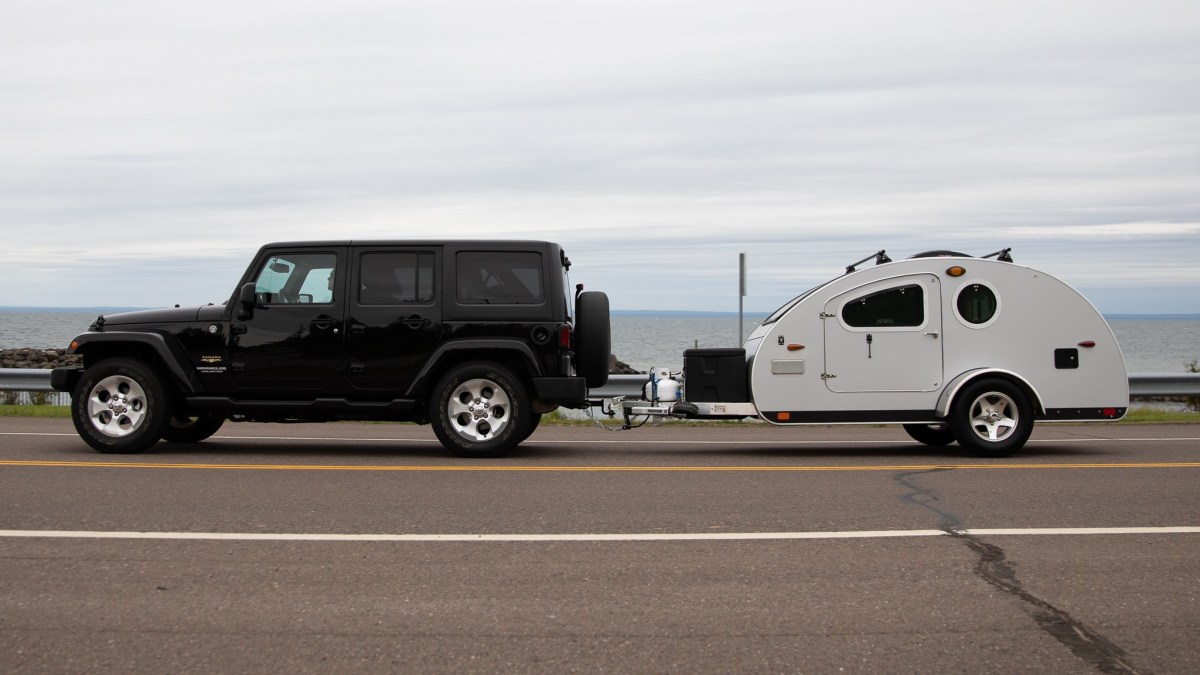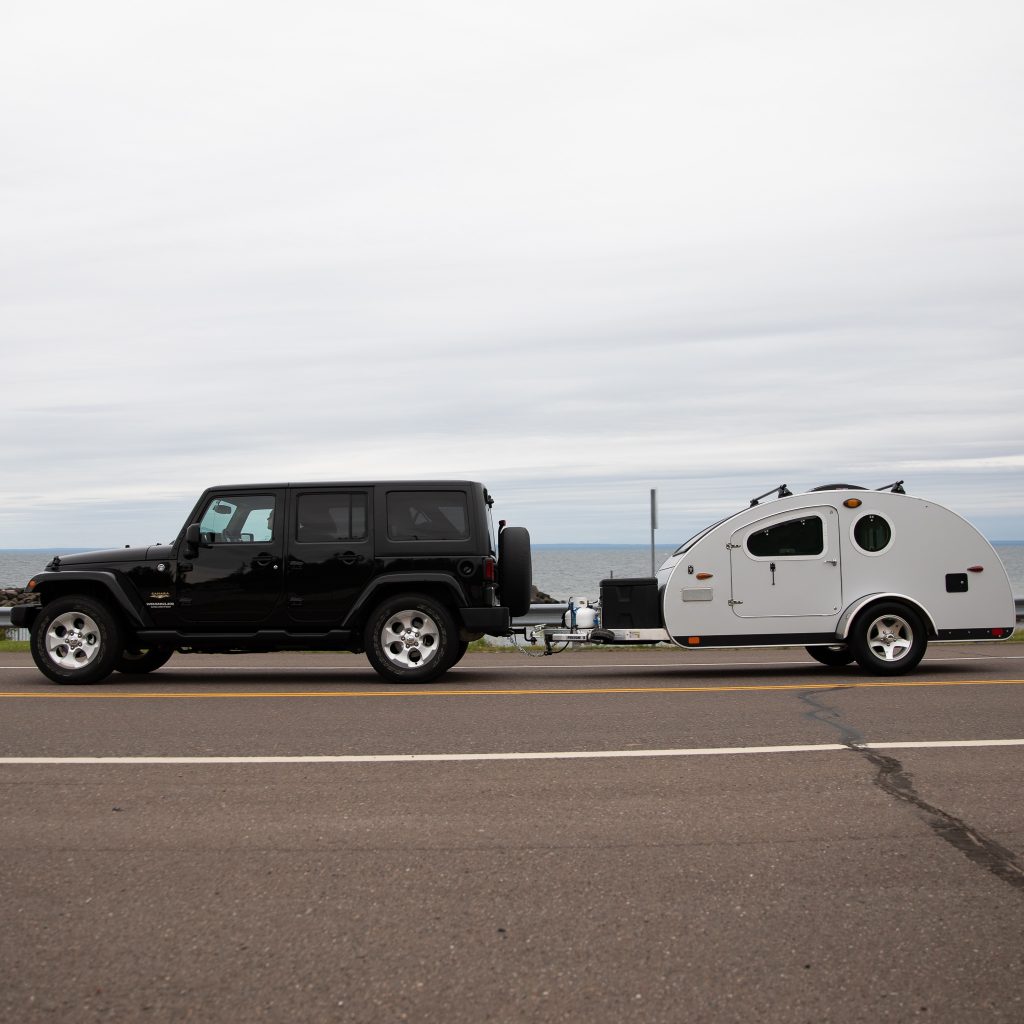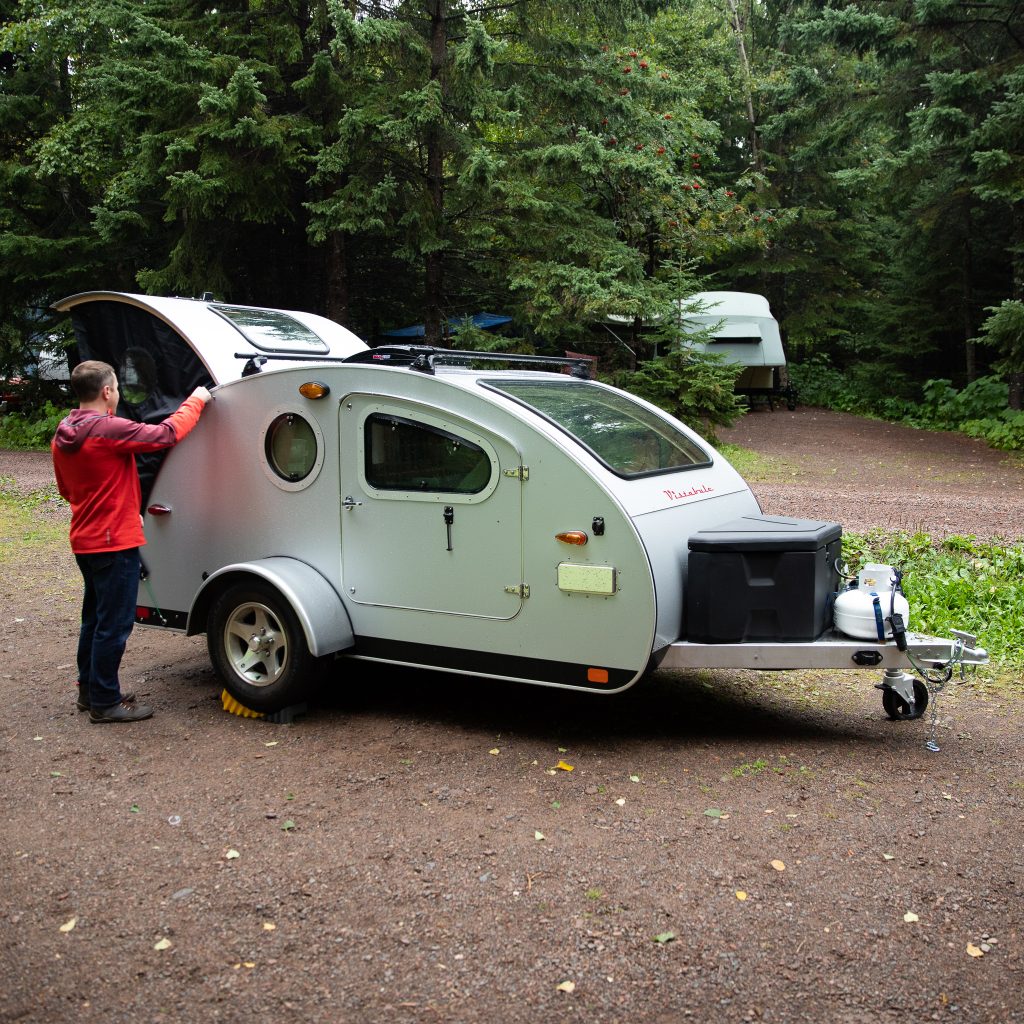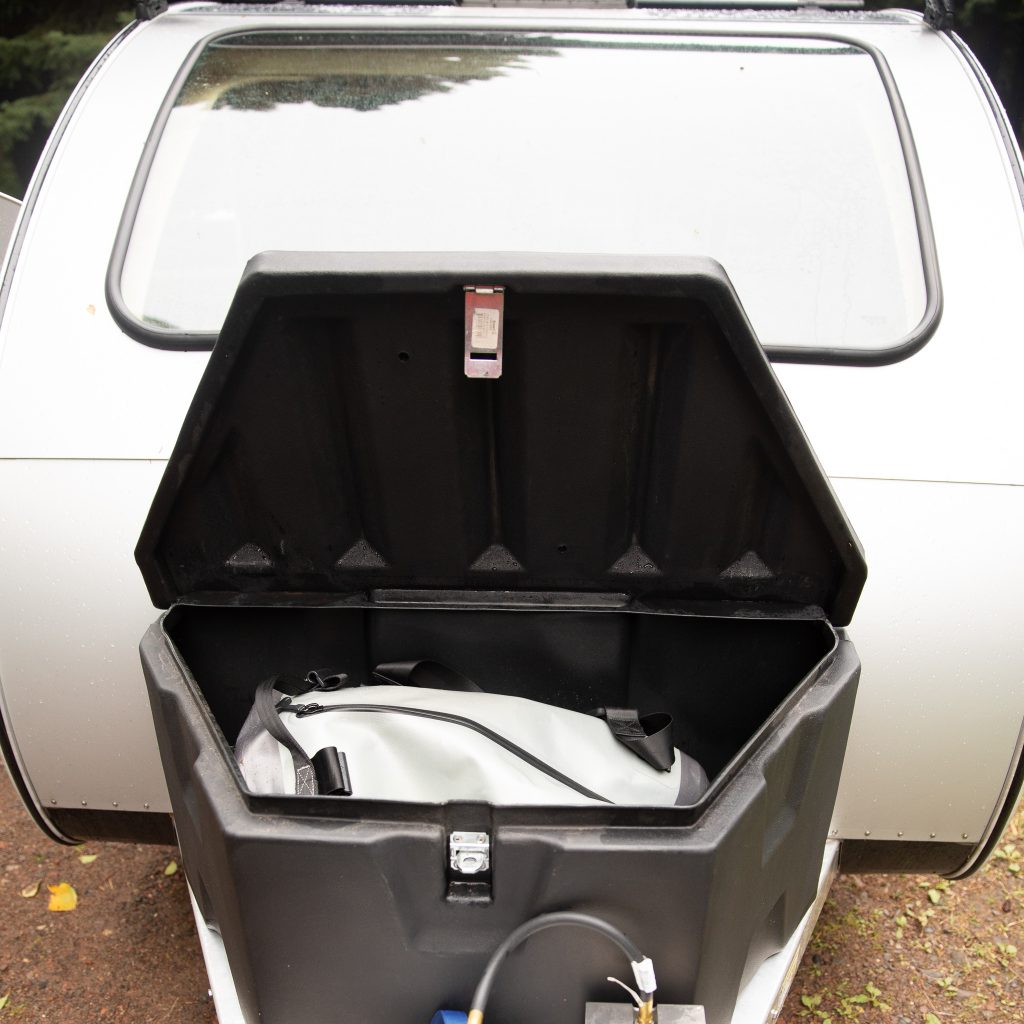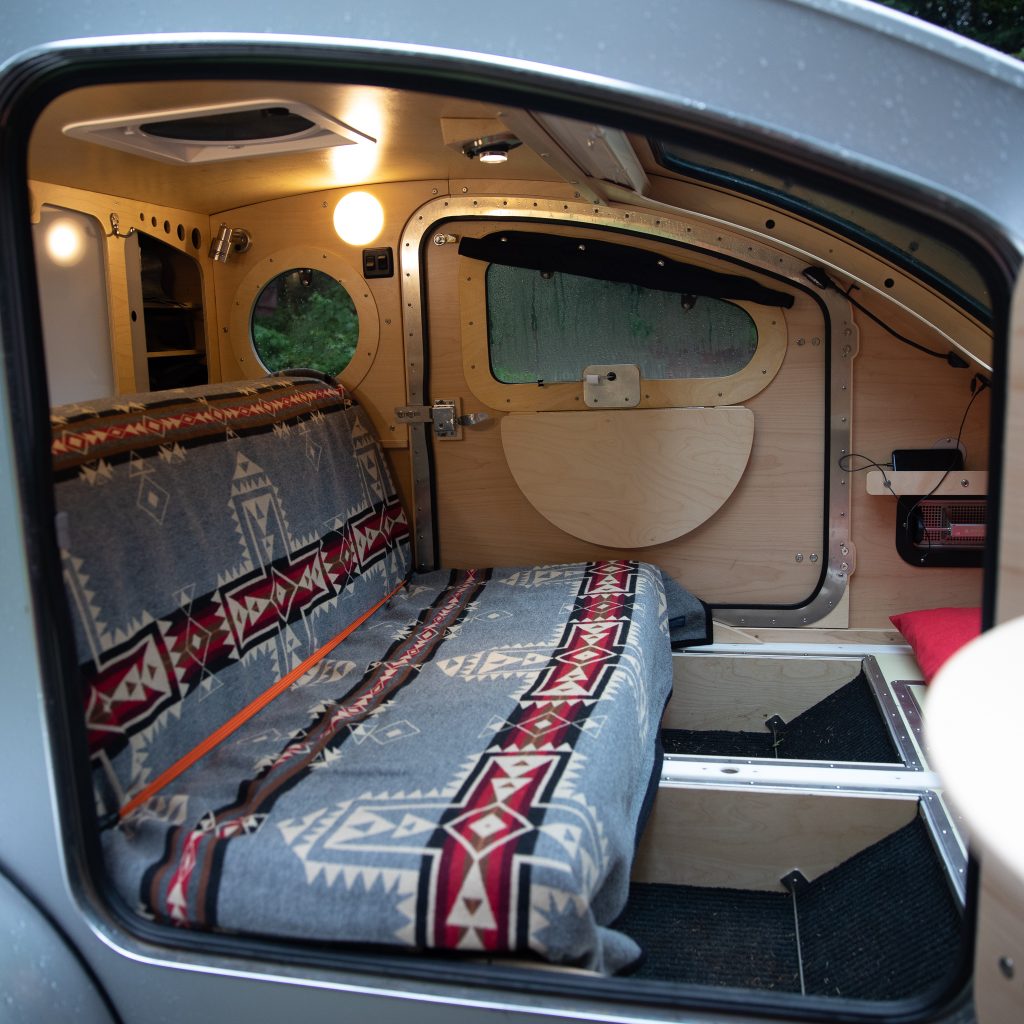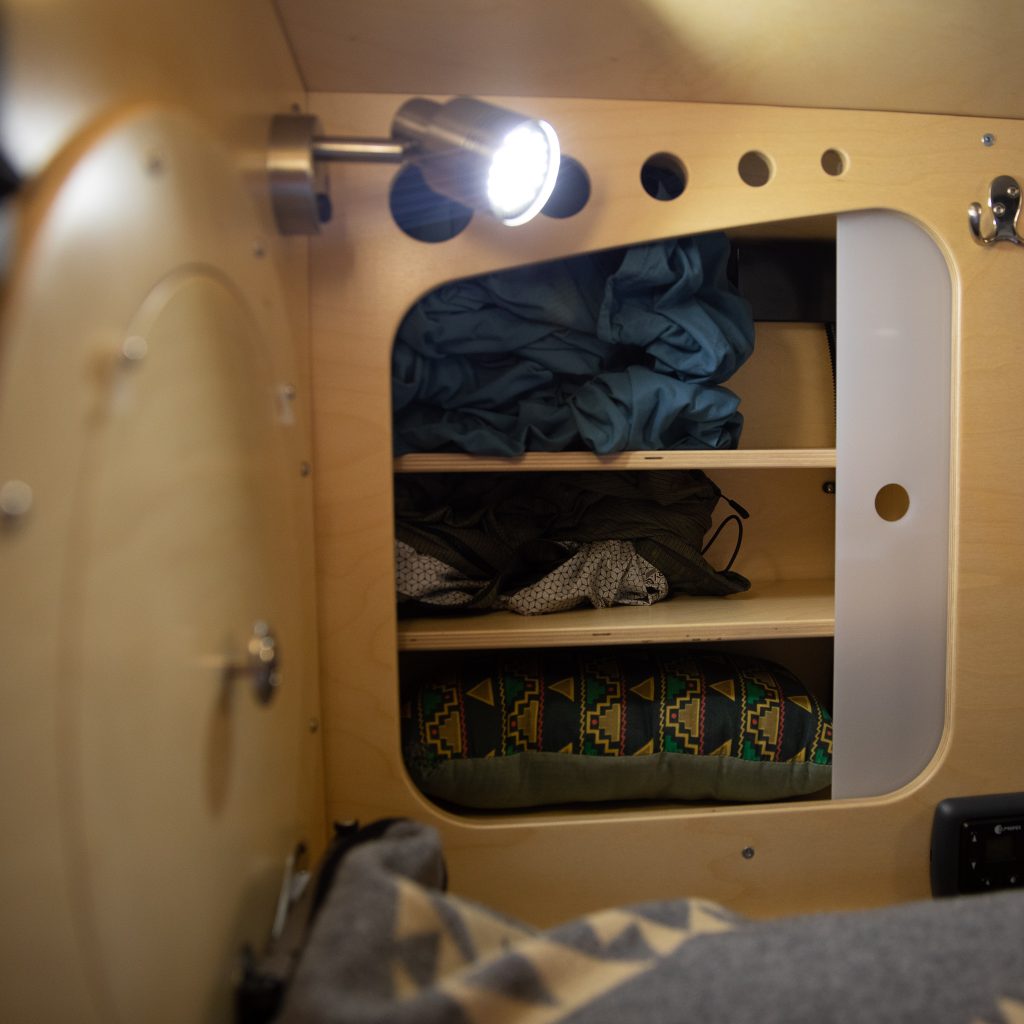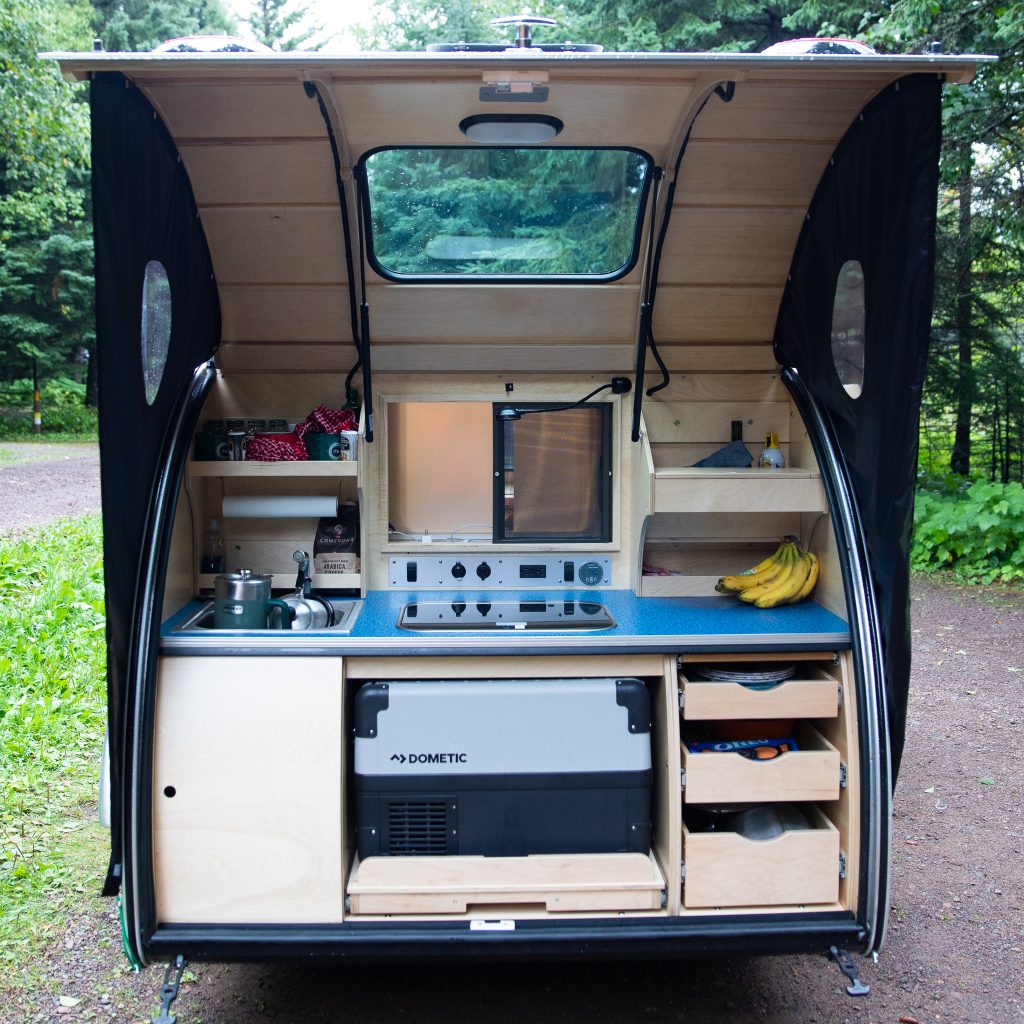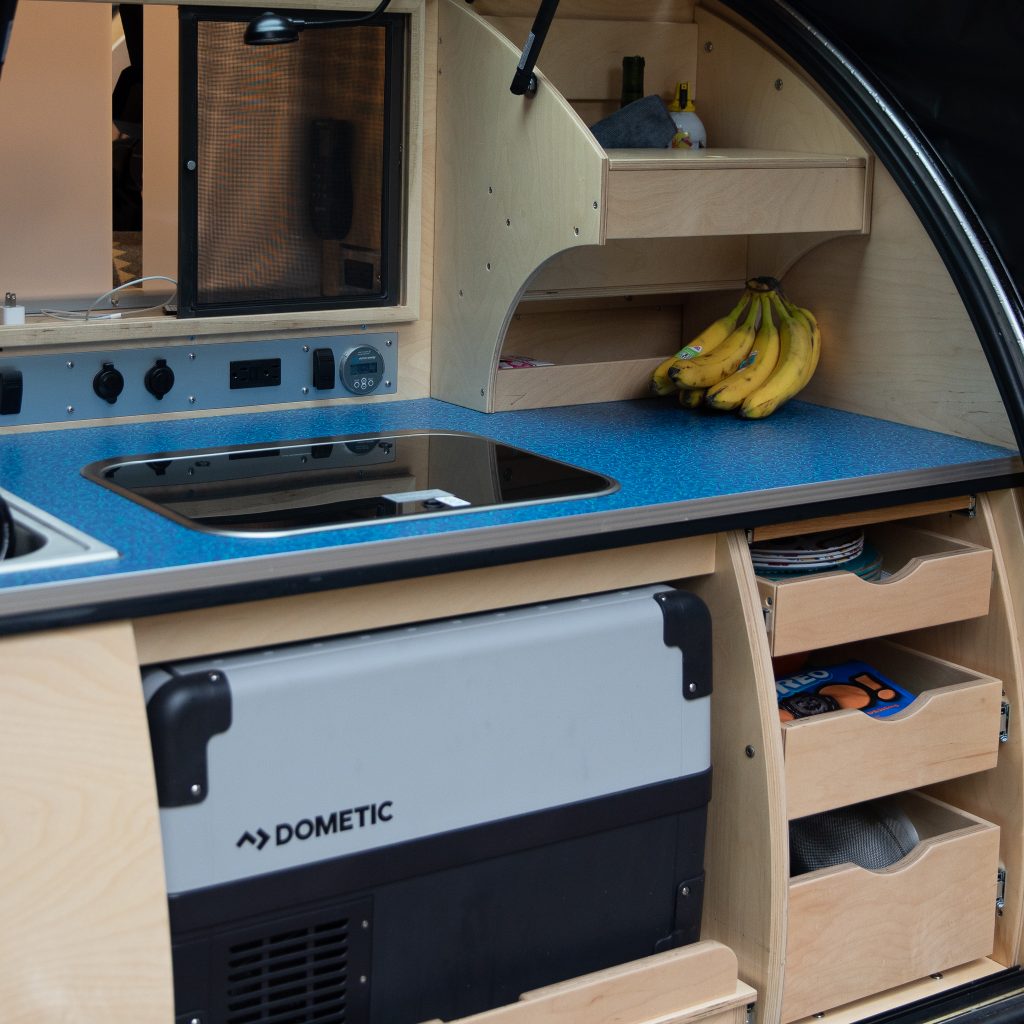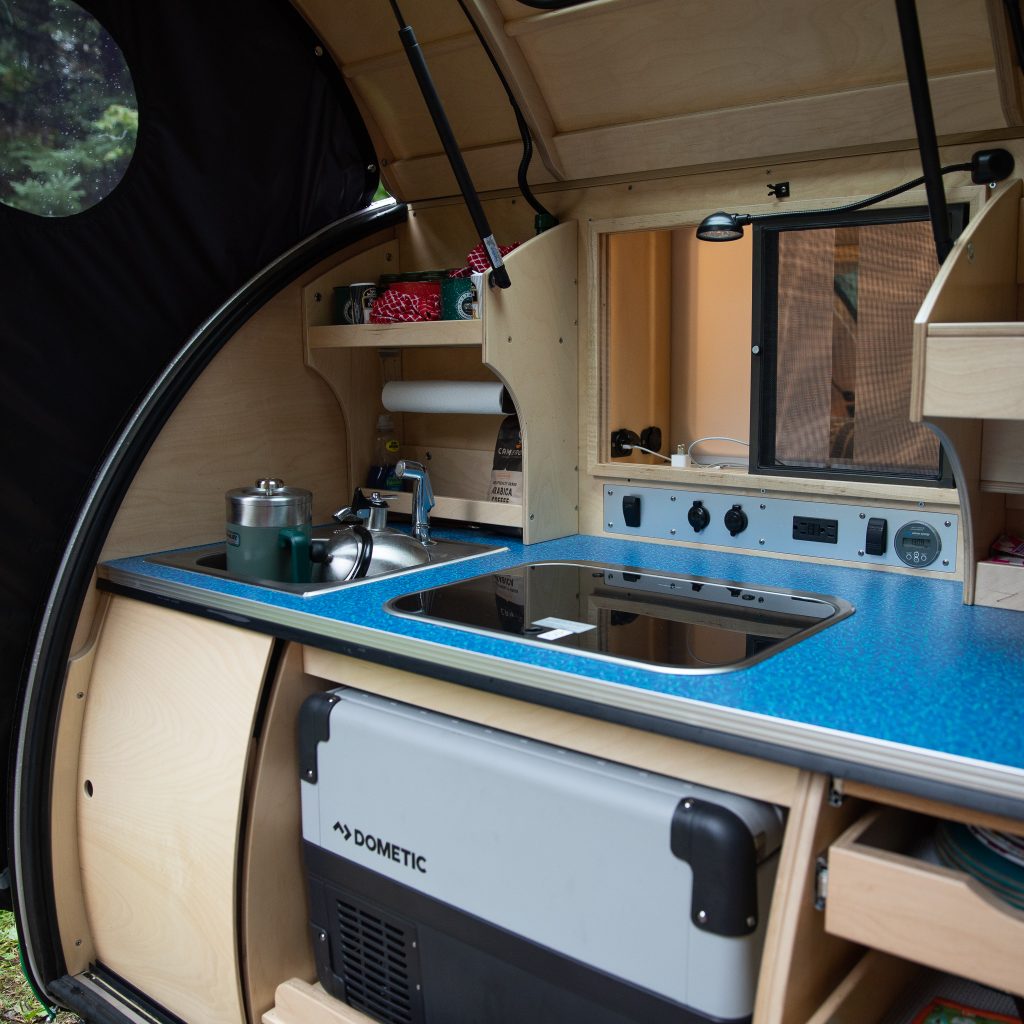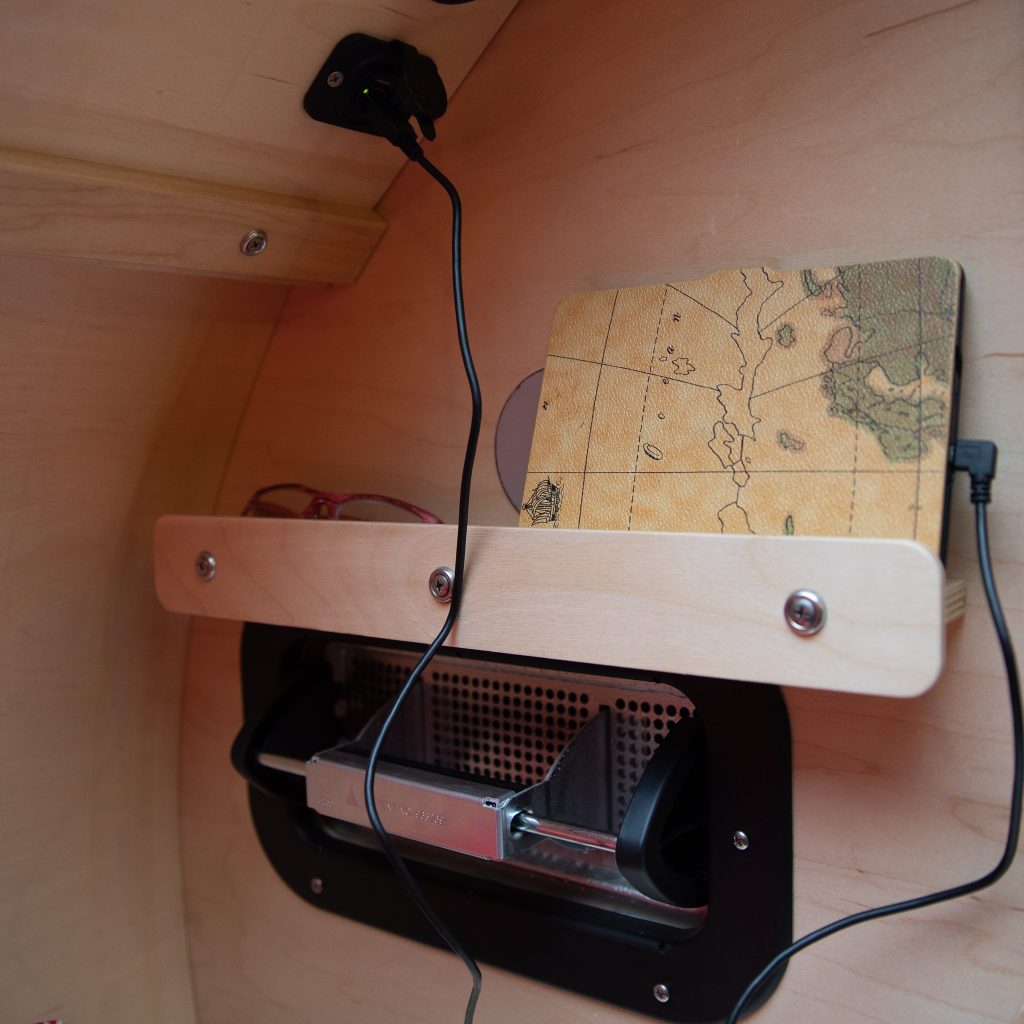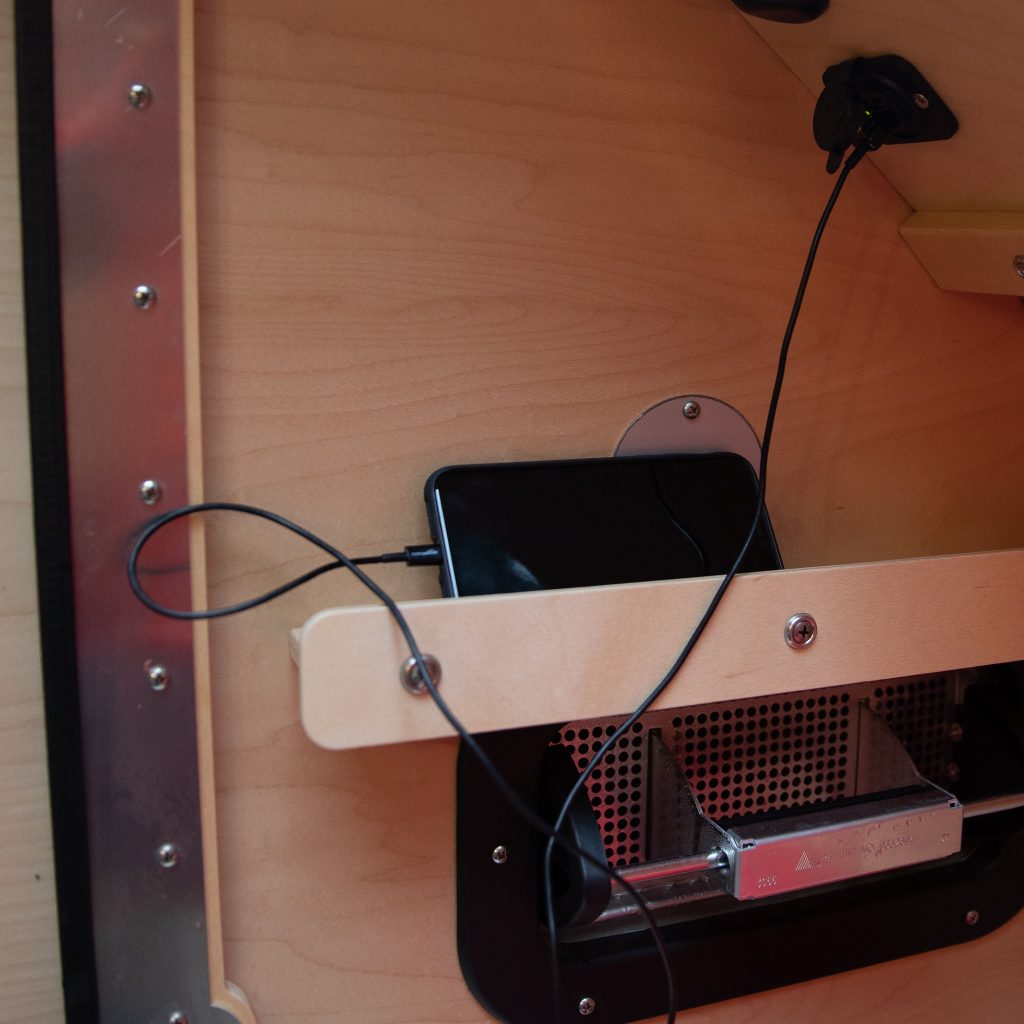Teardrop trailers have a unique history in the United States. They became popular after World War II when the economy was strong, and scrap metal was easily found to build them. We were aggressively expanding the highway system at that time, and people started traveling more than ever before. Teardrop trailers have always been tied to a sense of travel and adventure. Almost any vehicle can tow one, and everything you have is in a comfortable, compact package.
Their popularity dropped off in the 1950s, as Americans started to desire larger, more extravagant forms of mobile living. Then, in the 1990s, plans began to surface online again. Today, the tiny home movement is continuing to grow, and people are once again drawn to simpler, more environmentally friendly forms of travel. All of this has led to a resurgence of the teardrop trailer.
The founder of Vistabule Teardrop Trailers, Bert Taylor, was also fascinated with this compact form of travel. He built a simple “kit” teardrop to get a sense of materials, tools and build process. As he built that kit and looked deeper at the teardrop market, it became clear that he needed to design his own from scratch to achieve his goal. If you build a better teardrop trailer the world will beat a path to your door? Pretty much. Vistabule Teardrop Trailers has grown steadily year over year, and guess what? I had the opportunity to take one on the road for four days to see what they’re all about.
Below I cover four key areas: towing, storage, cooking, and power, to help you decide if it’s the right fit for you. We had a lot of rain on this trip, and in the end felt that that made for a more robust, real-world test.
Towing
I left Minneapolis with our Vistabule Teardrop Trailer and headed for the North Shore, and was surprised at how quickly I forgot I was towing it. It’s nimble, and anywhere I went with the Jeep, the trailer went too. Navigating parking lots and drive-throughs was easy. This was a big plus. I’ve made trips in the past with twenty-foot travel trailers, and while the conveniences they afford are nice, navigating can be very unsettling. Traveling with the Vistabule was 100% stress-free.
Storage
I suspect that the lack of storage was one thing Bert didn’t like about the plans he originally used because the Vistabule uses every nook and cranny available. There is easily enough storage space in the cabin for a week of adventure for two people. This is in part due to the ample space underneath the bed/sofa. It’s huge. You’ll want to put things under there that you primarily use during the day because once the bed is down and you’re in for the night, you can’t access it. Extra clothing, camp chairs, and dry food are all good things to store there.
Back in the galley I was able to get two full bags of groceries under the sink as well. This is where I kept the food that didn’t need to be refrigerated by the Dometic CFX 35W powered cooler. There is also storage for dining and cooking ware, as well as spices.
Cooking
The galley on the backside of the Vistabule is one of the main reasons a lot of people buy them, and it’s easy to see why. It functions just like your kitchen at home. Everything you need to make meals is within reach and easy to access. You can pull over, open the hatch, and start cooking. You don’t have to do anything special before you start traveling again. You wash the dishes, put them back in the drawers, and hit the road.
Our model had the drop-in Dometic cooktop as well as the Dometic CFX 35W cooler. The cooler slides out and is easy to use. The galley is a small space, but two people can still use it together. In our case, one person was usually chopping vegetables on slide-out cutting board while the other was cooking. The sink is small, but it was wonderful to have. We heated up water on the stove for washing dishes and it made cleanup a snap. The sprayer was also used a lot, due to the small size of the sink. It made it easy to rinse larger pots and pans. I’d also recommend getting the “bat wings” for the sides. We had a lot of rain on our trip, and they make for a comfortable, confined cooking space. Without them, I think it would be frustrating to cook on a rainy and windy day.
If you want a closer look at the galley, check out our video Cooking With The Vistabule Teardrop Trailer.
Power
The model I tested had the 100Ah lithium iron battery (LiFePO4) and the 130-watt roof-mounted solar panels. After using this setup for four days, I can’t imagine passing on this option. If you’re trying to keep the price down, there are other upgrades you could pass on, but this is one you want. It performed above and beyond all expectations. The solar panels did an excellent job of topping off the battery, even on cloudy days. They powered our cooler, charged our camera gear, and ran all the lights effortlessly for four days.
I was able to check the battery level throughout the trip on a phone app and was surprised to see the battery still at 70% at the end. I should also add that there are eight USB charging ports on the Vistabule. It seems that everything charges via USB these days (including newer laptops), and that made our digital lives much more manageable.
A few other thoughts
As I mentioned earlier, with a small space like this you have to stay organized. The more organized I was during the day, the easier it was to put the bed down to relax at night. I kept the things I needed during the day under the bed, and most of my clothes and personal items were in the cabinets behind the couch. Personal items that you need throughout the entire day are best kept in the upper cabinets because you can reach them quickly at any time.
It’s great to have shelter from the storm. There was a lot of rain and wind on our trip. This bummed me out at first, but then I realized that it would be a great way to test the Vistabule. Everyone likes camping when it sunny and warm, but how do things hold up when it’s wet and cold? I feel that the Vistabule really shined in this situation. Sitting in a warm cabin with a book with raindrops cascading down the massive window was actually relaxing! When it came to bad weather, the Vistabule offered the same peace of mind that an RV of any size offers. The only thing I’d add here is that in poor weather a tarp should be hung over the door. This would make it easier to get in and out with wet clothing. Beyond that, it was great.
In closing I’ll say that any shortcomings of the Vistabule Teardop Trailer were outweighed by the ease of transport. Towing it around was pure joy. It’s stress-free, and I think there is a lot to be said for that. When you’re on vacation, you want to relax as much as possible. With a large RV there are a lot of stressful moments mixed into the day (at least for me). With the Vistabule there were none. Pulling into a scenic overlook to pop open the galley and make lunch was fantastic. Sleeping in a climate-controlled hard side space gave some of the most restful sleep I’ve ever had in a campground. Unhooking it to take off on day trips took me less than a minute.
I had a great experience, and I understand why teardrop trailers are once again on the rise. It’s a unique combination of luxury and freedom. It’s a tiny home on wheels that made me smile every time I looked at it. No matter where I went exploring I had everything I needed. It became my adventure partner if you will. We always say, “if it gets you outdoors more, it’s a good thing.” Trust me – the Vistabule Teardrop Trailer will have you planning trips like never before.
Original story published in 2019. Updated in March 2023.
